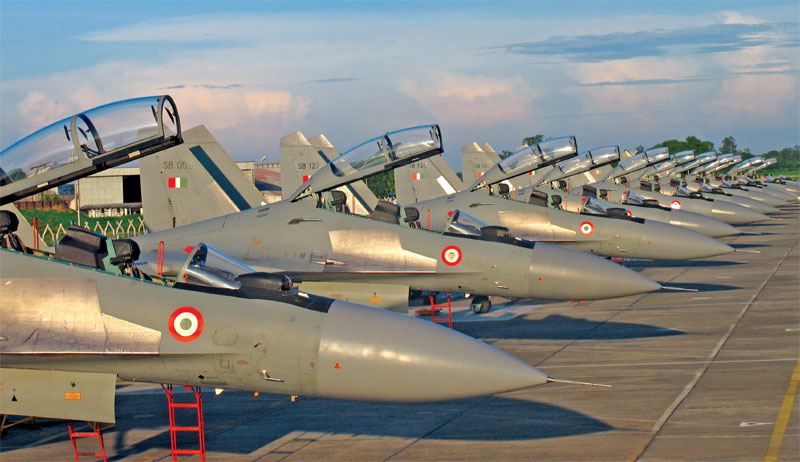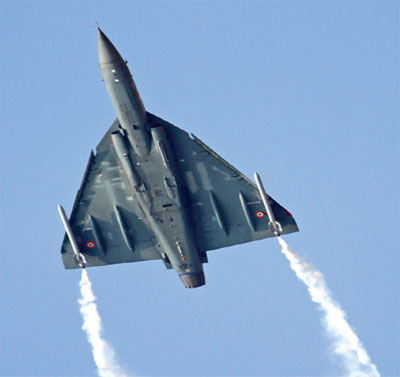The need of the hour is a technologically strong and advanced air force
Smruti D
China’s hostility towards India in the recent past has kept Indian authorities on their toes. As a result, the past few months have seen a shopping spree of military equipment for the armed forces. In focus is India’s ‘Make in India’ policy, wherein policies are being made for making and exporting Indian defence arms and equipment.

The Indian Air Force (IAF) plays a crucial role in combat. If one looks at the contemporary situation in Ladakh where a standoff between the Indian and Chinese troops is ongoing, the role played by the IAF becomes critical to keep a vigil, carry personnel and equipment to the border and be combat-ready to take on the most adverse of situations. The IAF has now been using attack helicopters such as MiG-29, Sukhoi-30, Apache-64 E and the CH-47F (I) and transport fleet including the AN32, C-130J and C-17. As per reports, Mirage 2000 fighter aircraft has also been moved to the bases near Ladakh region, so it can reach Ladakh in the shortest possible time, if and when required.
The Indian government in 2019 announced spending USD130 billion to modernise all three defence forces in a period of five-seven years in order to ‘bolster their combat capabilities over rivals in the region’ as reported by PTI. The plan sought to procure a range of weapons, missiles, air defence systems, fighter jets, submarines, warships, drones, surveillance equipment and developing infrastructure for extensive use of Artificial Intelligence. At the time of announcement, the government had said that its key focus is infantry modernisation. Among the procurements that the government wanted to fast-track were 110 multirole fighter aircraft for the IAF. The current aircraft used by the IAF are of third or fourth generation, whereas, India’s adversaries, China and Pakistan, have been inducting Generation-V aircraft into their squadrons.
Chief of Air Staff RKS Bhadauria during recent interviews and events has said that the IAF was now rooting for indigenised combat platforms.
Fighter Jets
Tejas MK-1 FOC: Hindustan Aeronautics Limited’s (HAL’s) indigenously developed Tejas Mk1 LCA Initial Operational Clearance (IOC) became operational for the first time in July 2016. The drawback of this aircraft was its limited range and lower fuel carrying capacity. It had two fixed tanks of 1,200 and 800 litre capacity.
The IAF commissioned an advanced-level Tejas Mk1 LCA of Final Operational Clearance (FOC) standard at Tamil Nadu’s Sulur Air Force Station on 27 May 2020, operationalising its second LCA Squadron No 18 ‘Flying Bullets’. This aircraft has an added fuel-carrying capacity of 725 litre installed at the centre fuselage. LCA FOC will have the capability to be refuelled mid-air, something which was lacking in the earlier version. The aircraft includes close combat gun, additional drop tanks, Beyond Visual Range (BVR) missile capability, updated avionics and improved flight control software suite.
Tejas MK1-A: The IAF is also looking to induct 83 Tejas MK1-A worth almost Rs 38,000 crore. In May, in an interview with The Times of India, IAF Chief Bhadauria had said that the contract for the jets was being scrutinised by the ministry of defence (MoD) and will likely be cleared soon. As of August 2020, the design wing of HAL, the Aircraft Research and Design Centre (ARDC) has completed the structural design of the new variant of Light Combat Aircraft Tejas Mk1-A.

The contract is under consideration and is yet to be inked. Reports suggest that the deal between the IAF and HAL will likely be signed by December. These fighters will be delivered over a period of six years after the first delivery takes place. They will replace the MiG-21 Bison. These fighters are an advanced version of the Tejas MK-1 FOC. The aircraft will have active electronically scanned array (AESA) radar capabilities, apart from other features.
The indigenously developed ASTRA Mk1 and the Advanced Short Range Air to Air Missile (ASRAAM) missiles, types of BVR missile have been identified to be integrated with MK1-A.
Tejas MK-II: LCA Mk-II is being developed by Aeronautical Development Agency (ADA), Defence Research and Development Organisation (DRDO) and HAL. Currently, the design procedure is underway for the helicopters. Tejas MK II will replace the ageing Mirage 2000 fighters. The aircraft will be fitted by GE 414 engine and is estimated to join the IAF in 2026. This engine is a 4.5 generation aircraft.
You must be logged in to view this content.

